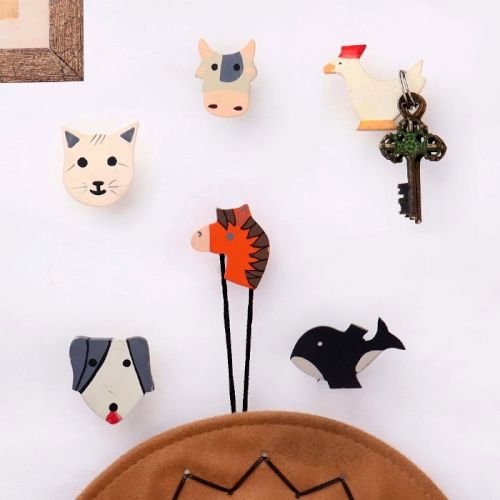-
Old Photograph Of Former Indian Prime Minister Atal Behari Vajpayee And Shekh Hasina
- ₹ 4,500.00
- 1 In Stock
-
Atal Bihari Vajpayee Sonia Gandhi LK Advani And Other Leaders Prime Minister Group Ph...
- ₹ 5,500.00
- 1 In Stock
-
Old Photograph Of Clement Attlee and Prime Ministers at the Commonwealth Conference
- ₹ 3,600.00
- 1 In Stock
-
Old Photograph Of Pandit Jawaharlal Nehru with Flying Sikh Milkha Singh On Hardboard
- ₹ 6,500.00
- 1 In Stock
Vintage Paintings: History, Craftsmanship, Aesthetic Power, and Decorative Potential
Vintage paintings aren’t just aged canvases—they are echoes sealed in brushstrokes. These works belong to a specific time not yet ancient but unmistakably distanced from the now. They exude a particular grace: worn yet dignified, faded yet speaking. Their charm lies in their era-specific techniques, pigments, and visual temperament that modern replications rarely replicate. A vintage painting doesn’t merely belong to the past—it holds a gaze that observes us back. Its language is analog—layered, romantic, honest. It's a preserved whisper from a palette that knew silence better than spectacle, poetry better than polish, sentiment better than sensation.
What Is A Vintage Painting?
A vintage painting is defined not solely by its age but by its distinct association with a particular artistic period, sentiment, and method. Generally ranging from the late 19th century to mid-20th century, vintage works are deeply influenced by social, cultural, and philosophical shifts that molded their composition. Unlike antiques, which may carry sheer historical weight, vintage paintings evoke a lived-in elegance—imbued with stylistic precision yet emotionally loose. They often use oil or tempera on canvas, with tactile brushwork that reveals not just technique but time’s quiet erosion. A vintage painting captures a mood—a quiet doorway into forgotten aesthetics. It’s the painter’s frozen breath, often less commercial, more personal, filled with twilight hues, smoky shadows, and sepia sentiments. Whether depicting domestic intimacy or rustic landscapes, a vintage piece often carries a melancholic tone, not because it is sad, but because it remembers. It doesn’t shout. It murmurs.
What Makes A Painting ‘Vintage’ Instead Of Just Old?
Not every old painting is vintage. Age may weather a canvas, but vintage requires a timestamped soul. A painting becomes vintage through its alignment with a specific cultural aesthetic and artistic language of a particular era. It's about the finesse of fading, the patina of past elegance, the historical context in which the artwork was conceived. Style, subject, medium, and craftsmanship play critical roles—techniques like impasto, chiaroscuro, and dry brush were handled differently in vintage periods. More importantly, it’s about resonance. An old painting may be forgotten; a vintage painting remembers you. The wear on its frame, the crackling varnish, the nostalgic tone of its palette—all subtly point to a moment once lived and felt. Vintage doesn’t mean ancient—it means aged with relevance. Aged with grace. It’s history in color, not just dust on canvas. A vintage piece lingers in the room long after your eyes have moved on.
What Emotions Or Themes Do Vintage Paintings Commonly Portray?
Vintage paintings are emotional landscapes—quietly dramatic, richly sentimental, or achingly restrained. Themes often revolve around pastoral life, portraiture, romanticism, wartime nostalgia, societal roles, and nature’s ever-changing melancholy. These paintings lean toward the evocative rather than the decorative. They capture longing, stillness, absence, or joy with a poetic restraint. A child by a sunlit window, a woman awaiting a letter, a path winding through a rain-washed forest—these are not mere images; they are moods caught in oil. The emotional pull comes not just from subject but from how light is handled, how shadow dances, and how texture breathes through layers. In these works, time slows down. A sigh hangs between figures. A gaze extends past the canvas edge. The dominant emotional current is usually one of retrospection—an ache that doesn’t overwhelm but gently stirs. Vintage paintings don’t demand; they invite. And in doing so, they hold us in moments we’ve never lived, but somehow remember.
What Are The Most Recognized Styles In Vintage Painting?
Vintage paintings commonly reflect key artistic movements that shaped the late 19th and early 20th centuries, each defined by its visual rhythm and philosophical pulse. Impressionism, with its fleeting light and visible brushstrokes, captures emotional immediacy and shifting atmospheres. Realism, grounded in authenticity, documents the ordinary with dignity—faces, farms, factory life. Academic art, influenced by classical ideals, emphasizes technique, anatomy, and controlled drama, often with mythological or historical subjects. Romanticism, intense and dramatic, bathes its subjects in emotional storms—clouds swirling over figures lost in thought. Symbolism hints at the spiritual or mysterious, often in subdued palettes. Each style whispers in the language of its time—whether through the muted greens of landscapes, the hazy softness of portraits, or the regal posture of post-war subjects. These styles aren’t just classifications; they are tonal signatures. They speak of an era that painted not just scenes, but sentiments, not just forms, but philosophies.
Why Are Vintage Paintings Still Revered In The Contemporary Art World?
Vintage paintings persist in relevance not because they resist time, but because they understand it. In an age flooded by digital immediacy, these works remind us of a slower, richer, more deliberate vision. Contemporary artists and collectors alike find in them a grounding aesthetic—something tactile, textured, and thoughtfully imperfect. Their enduring appeal lies in their craftsmanship: brushstrokes that feel handmade, palettes untouched by filters, subjects chosen not for clicks but for contemplation. Museums preserve them; designers borrow from them; homes crave their ambiance. They offer a counterpoint to minimalism, a gentle rebellion against the sterile and the fast. Vintage paintings possess an aura—a layered quietness that refuses to be rushed. They aren't nostalgic escapes but reminders of enduring beauty. Reverence grows not just from history but from humanity—these pieces were touched, labored over, lived with. And today, in rooms filled with glass and steel, their cracked textures still speak louder than the gloss.
Techniques, Mediums & Artistic Tools for Vintage Paintings
Vintage paintings breathe through deliberate craftsmanship—each stroke revealing a dialogue between time and technique. Artists of the past were not just illustrators of beauty; they were sculptors of mood, mood rendered not in marble but in pigment, light, and decay. These works were never rushed. They demanded patience, as mediums dried slowly, colors settled into cracks, and stories settled into corners. The tools were not flashy but intimate—hand-mixed pigments, oil-soaked brushes, burnished wood panels, stretched linen. What we call vintage today was once revolutionary, shaped by necessity, nature, and cultural rhythm. Their tools—tempera eggs, oils, gold leaves—were not just materials, but memories waiting to age.
How Were Vintage Paintings Traditionally Created?
Vintage paintings were created through a series of deliberate, labor-intensive processes that blended technical knowledge with poetic ritual. The surface—be it wood, canvas, or linen—was first treated with gesso or chalky grounds, creating a texture that would absorb pigment and allow layering. Artists often sketched outlines using charcoal or silverpoint, followed by glazing techniques using oil or egg tempera. Each layer was cured, often for days or weeks, and built up using delicate cross-hatching, sfumato, or chiaroscuro to invoke mood, volume, and form. Lighting played an essential role—artists studied how the light fell at dawn or dusk, capturing its reflection within flesh tones or shadows. Painting was not just about capturing reality but idealizing it, translating metaphysical truths onto mortal surfaces. The entire creation process felt like a reverent ritual—anchored in theology, nature, or philosophy.
What Painting Mediums Were Commonly Used In Vintage Eras (E.g., Oil, Tempera, Gouache)?
Oil, tempera, and gouache were the holy trinity of vintage artistry, each with a personality. Tempera was the oldest, crafted by mixing pigment with egg yolk—a fast-drying, matte medium used famously in Byzantine and early Renaissance art. It gave artists the ability to produce crisp detail and spiritual clarity. Oil paints emerged as the medium of depth, vibrancy, and luminosity. Its slow drying time allowed for complex blending, shadow gradation, and emotional richness. Think of Rembrandt’s velvety night scenes or Vermeer’s soft, poetic interiors. Gouache, though lesser used for full-scale canvases, played a quiet but precise role in illustrations and miniature works—its opacity allowing crisp, graphic renderings. Each medium wasn’t just a choice but a philosophical alignment—between the ethereal, the human, and the immediate. These mediums held memory, decay, and legacy—preserved beneath layers of varnish and time.
What Role Did Canvas, Wood, Or Fabric Play In Vintage Art?
Surfaces were never incidental in vintage painting—they were deeply symbolic, often dictating the entire aesthetic and technique. Wood panels, used extensively before the 16th century, offered stability and absorbed tempera’s fast-drying nature well. Their hard texture allowed for meticulous detail but limited scale. Canvas entered later, favored in Venetian and Dutch works, enabling larger compositions and freer brushwork due to its flexibility and portability. It also welcomed oil’s slow-drying nature. Linen was the preferred fabric—durable, tightly woven, and ideal for smooth glazes. Burlap or coarse fabrics were rarely used, unless the texture was intentionally part of the piece’s character. The surface affected absorption, texture, and even the tonal atmosphere of a painting. Over centuries, these foundations aged, cracked, and changed—adding to the artwork’s soul. They are not just materials but silent collaborators in time’s choreography.
How Do Brushstrokes And Texture Affect The Feel Of A Vintage Painting?
Brushstrokes in vintage painting are not merely marks; they are fingerprints of thought, temperature, and mood. The length, pressure, direction, and layering of strokes communicated more than form—they whispered intention. A smooth sfumato blended edge suggested stillness, introspection; a thick impasto implied vitality, movement, or psychological unrest. Texture could make a subject breathe or brood. For example, the granular texture in a Van Eyck portrait draws the viewer into realism so precise it feels spiritual. In contrast, a cracked glaze or aged varnish in Baroque works adds a melancholic warmth. These textures, unpolished by design or time, connect the viewer with a sense of presence—of having stood before a real soul, a real moment. Brushwork became language, and texture its rhythm. In vintage art, surface tension held emotional gravity.
What Should One Look For In The Technique To Identify A Period-Specific Work?
Identifying the era of a vintage painting lies in observing brush techniques, underpainting styles, pigments used, and how light is rendered. Gothic paintings used flat gold backgrounds and stylized human forms. Early Renaissance artists introduced perspective but retained decorative stylization. The Baroque era exploded with contrast—tenebrism, dynamic forms, and religious fervor. Romantic painters focused on emotion through loose brushwork and atmospheric haze. Impressionists, though slightly later, can be identified through visible strokes and plein-air lighting. Even the substrate tells tales—wood hints at earlier centuries, while canvas indicates mobility and innovation. Pigment analysis helps too; for example, the presence of lapis lazuli suggests a high-value 15th-century work, while Prussian blue denotes 18th-century origins. Varnish aging, craquelure patterns, and preparatory sketches beneath paint layers are forensic clues. Technique isn’t just a signature—it’s a timestamp hidden within every layer, waiting to be read by those who know where to look.
Artistic Intent and Visual Storytelling of Vintage Paintings
Vintage paintings aren’t just brushwork and oil—they’re whispers from time, breathing silent narratives across canvas. Their artistic intent pulses beneath every crackled surface, stitched into faded hues and golden light. These works speak in metaphors, inviting the eye to wander and the soul to respond. Whether it was a quiet domestic moment, a haunting landscape, or a royal portrait cloaked in regality, each visual told a larger story—one of human longing, identity, and collective memory. Every pigment placement was deliberate, echoing the painter’s inner weather and the outer world they sought to frame, challenge, or immortalize.
What Stories Or Messages Did Vintage Paintings Aim To Convey?
Vintage paintings often served as reflective mirrors of their epoch—capturing revolutions, rituals, reverence, and raw humanity. Through symbolism and delicate composition, they told stories that transcended time. A woman seated by a window wasn’t merely resting; she might symbolize waiting, freedom denied, or domestic stillness. A stormy sea could stand for the turmoil of faith, war, or man’s inner struggle. These weren’t idle visuals—they were narratives layered in oil, where every fold of fabric or tilt of a chin hinted at subtext. Allegorical painting thrived, especially in Renaissance and Romantic works, embedding myth, morality, and mortal consequence within the frame. The viewer wasn’t just looking—they were being asked to read a painting the way one reads a poem, with pauses, interpretation, and inner dialogue. And just like good literature, what wasn’t said—the negative space—was just as loud as what was rendered.
How Did Artists Express Political, Spiritual, Or Cultural Symbols Through Vintage Art?
In vintage paintings, symbolism wasn’t an afterthought—it was the spine. Artists layered their canvases with motifs and emblems drawn from classical mythology, religious doctrine, and emerging politics. A withering laurel wreath could critique fleeting power, while a bleeding heart might evoke spiritual sacrifice. Colors themselves became charged: indigo for royalty, vermilion for martyrdom, and gold leaf for divine presence. Spiritual themes were often rendered in chiaroscuro, playing sacred light against worldly darkness. Political commentary sometimes hid behind pastoral scenes or classical allegories—coded dissent masked in beauty. During periods of censorship, artists leaned on visual metaphor to critique authority or celebrate national identity. The cultural language of gesture, posture, and dress served as a palette of intent. Even empty space—the untouched canvas—wasn’t void; it held breath, waiting for the viewer to fill it with personal meaning. Through these layers, painters communicated far more than visual beauty—they embedded beliefs, resistance, and reverence.
How Do Light, Shadow, And Color Palettes Influence The Mood Of Vintage Paintings?
Light and shadow in vintage paintings weren’t merely tools of depth—they were emotional cartography. A shaft of amber sunlight through a latticed window could evoke quiet longing, while the velvet dark in a Caravaggio work crackled with moral tension. The play of light on skin, fabric, or a tarnished goblet spoke of time, decay, or divinity. Artists manipulated these elements like music—controlling tempo, contrast, and emotional pitch. A cool, muted palette drew the eye inward, asking contemplation; while warm, earthy tones suggested nostalgia, mortality, and intimacy. Tonal harmony and disharmony influenced emotional pull—blues and ochres whispered sadness, scarlets and golds roared opulence or wrath. Techniques like sfumato blurred edges to create dreamlike memory-scapes, while high contrast tenebrism created moments of dramatic revelation. Light wasn’t just an illuminator—it was a character itself, revealing, concealing, and leading the viewer's eye across the canvas like a storyteller with a lantern.
Purchase, Collection & Investment of Vintage Paintings
Vintage paintings are more than relics of brush and time—they're sensorial doorways to another era. To possess one is to curate memory, colour, and decay with intention. Whether it’s the crackled surface of a 19th-century oil or the sun-faded hues of an Art Deco watercolour, each piece isn’t just art—it’s survival in pigment. Collecting them isn’t a trend; it’s a dialogue between hand, history, and heart. The value transcends aesthetics; it anchors legacy. As wall hangings or silent provocateurs, these works ask for nothing but attention and offer atmosphere in return—making them not only decorative, but contemplative artifacts of human expression.
Where Can You Buy Authentic Or Reproduction Vintage Paintings?
Authentic or reproduction vintage paintings are acquired not in haste but in discovery—through portals built on trust, curation, and age-old dust. Reputed art galleries, vintage shops, auction houses like Sotheby’s or Christie’s, and antique fairs across Paris, Mumbai, and Florence act as physical troves. Digitally, platforms like IndianShelf, 1stDibs, Saatchi Art, or Artsy offer refined navigation through verified collections. Then there are local dealers, estate sales, and even curated flea markets whispering hidden gems beneath layers of forgotten time. The tactile experience of sourcing—feeling canvas, tracing strokes, sensing residue—is irreplaceable. The key lies not only in the source but in knowing what you’re truly seeking: mood, medium, or memory?
How Can You Verify The Authenticity Of A Vintage Painting?
Authenticity in vintage art isn’t just proven—it’s revealed. It lives in signatures, brushwork irregularities, paper aging, pigment behavior, and provenance records. Begin with a provenance trail—auction receipts, certificates, gallery markings, or artist authentication. UV lighting can expose modern paint under old varnish; infrared reflectography can detect underdrawings or corrections untraceable to the era claimed. Craquelure (the fine cracking in paint layers) should age naturally, not mechanically. Consulting with certified art appraisers, forensic experts, or restorers is essential—because even seasoned eyes miss what time hides well. And sometimes, it's the frame, canvas weave, or even the nails that betray or authenticate. Art speaks, but only trained silence can listen well.
Are Reproductions Of Vintage Paintings Valuable For Collectors Or Only For Decor?
Reproductions lie in a liminal space—somewhere between homage and imitation. For collectors, their value is emotional or instructional, rarely financial. But in decor, they are sovereign. A high-quality giclée reproduction on textured canvas can carry the essence, if not the soul, of the original. Museums, for instance, house replicas to preserve originals, making reproductions functional and legitimate. For emerging collectors, these pieces build visual vocabulary and curatorial taste. They democratize aesthetics, allowing patrons to engage with masterpieces otherwise inaccessible. However, in markets where rarity equals worth, reproductions remain interpretative, not investment-worthy—valuable in narrative and feel, but not in financial gain or future trade.
What Makes A Vintage Painting A Worthwhile Investment?
A vintage painting becomes investment-worthy when age aligns with artistry, provenance, rarity, and cultural relevance. It’s not enough for it to be “old.” It must carry the tension of time, mastery of medium, and lineage of ownership. Works from movements like Impressionism, Bauhaus, or even Bengal School command higher respect due to their defining historical contexts. The artist’s stature—regional or global—adds weight. A painting’s condition, originality, and scarcity further compound its monetary value. Yet the true investment is not just in resale. It lies in holding history, in letting a quiet canvas compound in meaning, aura, and price with each passing decade. Timelessness, after all, ages well.
Care, Framing & Preservation of Vintage Paintings
Vintage paintings are time-travelers on canvas. Their cracked pigments and oxidized layers whisper age-old stories—of hands that painted, places they lived, walls they adorned. To care for them is to preserve memory, to restore silence without silencing it. These artworks demand more than casual attention; they ask for observant respect. Care isn’t just archival; it’s emotional stewardship. From climate control to UV-free lighting, every element becomes a part of the painting's new habitat. Framing isn't just functional—it’s about harmony, era-relevance, and breathability. Preservation is not about freezing time, but keeping the art alive in time’s embrace.
How Do You Properly Store And Maintain A Vintage Painting?
Vintage paintings respond to their environment like living beings—fragile yet profoundly telling. The first rule of maintenance is stability. Store them in spaces with regulated temperature and humidity—ideally, 18–22°C and 40–50% humidity. Avoid attics, basements, and direct sunlight. Use acid-free paper or unbleached muslin if wrapping is needed. If a painting is framed, ensure the backing board is archival and acid-free. For storage without hanging, place paintings upright—not stacked—with protective separators. Dust gently with a soft brush, never with a damp cloth. Most importantly, touch sparingly; human oils can damage varnishes. Maintenance is a quiet ritual—unseen but profoundly impactful.
What Frames And Materials Best Complement The Vintage Aesthetic?
A vintage painting seeks a frame like a poem seeks punctuation—silent, yet defining. Think aged wood—walnut, mahogany, or distressed oak. Gilt frames with delicate leafing offer a nod to classical richness, while ebony-stained frames exude modern restraint with historical weight. Go for museum glass or UV-filtering acrylic—materials that vanish visually but shield historically. Use linen or silk liners when the artwork calls for texture contrast. Avoid synthetic or overly polished finishes; they clash with the artwork’s earned imperfection. Let the frame echo the period and origin—never compete with the painting. Think reverence, not renovation. Let it frame, not define.
Can Old Paintings Be Restored Without Losing Their Original Feel?
Yes—but only when restoration becomes a dialogue, not an erasure. True restoration walks the tightrope between repair and reverence. It’s not about making the painting look new—it’s about helping it live longer in its own skin. Conservators use reversible techniques: solvents calibrated to lift grime without disturbing pigment, inpainting that fills cracks without overpainting, and varnish layers that can be removed or refreshed without altering the original brushwork. The key is to preserve texture, tone, and aging nuances. A good restoration retains the artist’s breath, the canvas’s journey, the patina of time. Anything more is cosmetic. Anything less is neglect.
What Are Common Damages Vintage Paintings Suffer Over Time?
Time doesn’t attack—it accumulates. And in that quiet accumulation, paintings suffer. The most common culprits? Cracking (craquelure), caused by shifts in humidity or temperature. Fading, from relentless light exposure. Warping, when the wooden stretcher or canvas expands unevenly. Mold and mildew, fostered by damp storage. Flaking paint, often from brittle, aging binding mediums. Varnish yellowing, which dulls once-luminous hues. Tears and punctures from mishandling. Even dust and airborne pollutants, which settle like slow decay. But none of these are irreversible—only ignored damage is. Each flaw is a footprint of time. The task is not to erase, but to understand and care for them.
Home Decor, Styling & Mood Setting With Vintage Paintings
Vintage paintings aren’t just art—they are memory carriers, emotional blueprints of a bygone era that softly whisper stories through brushstrokes. When integrated into a home, they don’t merely decorate but dramatize, contextualize, and humanize the walls. The subdued palettes, the intentional cracks, and the poetic presence of age craft a layered emotional texture in the space. Whether it’s a sepia-toned portrait or a time-worn pastoral landscape, vintage art builds intimacy. It slows the room down. In a world sprinting ahead, vintage paintings offer a nostalgic pause—timeless, imperfect, and beautifully human.
How Can Vintage Paintings Influence A Room’s Ambience Or Tone?
Vintage paintings influence a room like scent or lighting—subtle yet visceral. Their mood isn’t loud; it seeps. Earthy oils, muted pastels, and crackled finishes speak in whispers that echo memory and calm. A Victorian portrait lends sophistication; a fading countryside creates warmth. They create temporal distance, making the space feel suspended—part dream, part memory. Place a sepia-toned street scene in a neutral room, and suddenly it feels cinematic, storied. This is mood-setting at its finest—not a change of style, but a change of emotional climate. Vintage art doesn’t impose; it haunts softly. It’s less about matching tones and more about evoking an emotional undertone.
What Interior Styles Pair Well With Vintage Artwork?
Vintage artwork adapts like an old soul in new cities. It pairs with styles that allow it to breathe—Bohemian, where layered textures and stories intertwine effortlessly; Rustic, where the rawness of wood and time-worn strokes create harmony; Eclectic, where chaos finds poetry in contradictions. Even Minimalist spaces benefit: a solitary vintage piece becomes not just art, but a silent character in the room. Industrial interiors, with their metal bones and concrete skins, soften under the warmth of a sun-bleached canvas. Think less about matching era and more about contrast, context, and emotional fluency. Good design doesn't ask art to fit—it listens to what it brings.
How Do You Choose The Right Vintage Painting For A Living Room, Hallway, Or Study?
It begins not with the wall but with the emotion you want the space to exhale. For the living room, think “anchor” or “invitation”—landscapes, human forms, or abstracts that draw the eye and root the room. For a hallway, choose intrigue over clarity—mysterious portraits or fragmented stories that tease passersby. In a study, look for intimacy or introspection—moody skies, old maps, or still lifes that speak quietly to solitude. Size matters, yes—but so does stillness. Let the painting feel like it belongs emotionally, not just aesthetically. Choose pieces that pause you. That make you wonder who painted them—and why.
Can Vintage Paintings Be Used As Focal Points In Modern Decor?
Absolutely—and they often should. In modern decor, where clean lines and polished surfaces risk sterility, a vintage painting injects humanity. Imagine a Scandinavian living room—white walls, pale wood, sparse furnishings—then imagine it with a dark oil portrait from the 1800s hung solo above the sofa. The painting becomes a portal, a rupture in time that draws every eye and asks questions no coffee table book can answer. It’s not just contrast—it’s counterpoint. A focal point doesn’t have to shout; it just needs to feel like a soul in the room. That’s what vintage art brings—a visible pulse in a quiet space.
What Are Some Creative DIY Display Ideas For Vintage Art?
Forget sterile framing. Let the edges show. Mount unframed pieces on old wooden boards for texture. Try layering multiple small vintage works on open shelves with ceramics or books. Create a salon wall, but break the grid—arrange frames as though they’ve evolved there over decades. Use clipboards or binder clips for sketches—industrial meets intimate. Suspend a piece from leather straps or rope for a rustic feel. For extra storytelling, pair the painting with handwritten notes or found objects that echo the subject. Don’t just display vintage art—stage it like memory. Let it feel lived-in, as if it was always meant to be there.
Cultural Impact & Historical Legacy of Vintage Paintings
Vintage paintings carry the sediment of time, layered with pigments that once held divine meaning, rebellion, or silence. They whisper legacies—etched in brushstrokes and aged canvases—that chart the evolution of identity, culture, and civilization. From temple murals to royal portraiture, each painting was a visual text, a codified language of belief, myth, and emotion. Vintage art didn’t merely decorate—it documented, declared, and dignified. Today, their patina isn't just physical; it’s ideological, emotional, and deeply embedded in the way we perceive aesthetics. These works remind us that art was once inseparable from ritual, authority, and cosmic storytelling.
What Is The Historical Significance Of Vintage Paintings Across Civilizations?
Vintage paintings served as more than aesthetic pursuits—they were vessels of memory and mirrors of power. In ancient Egypt, wall frescoes told of afterlives and rituals, while in India, miniature paintings chronicled myth and monarchy. In Renaissance Europe, paintings weren’t mere decorations; they were declarations of divine right, scientific revolution, and philosophical awakening. These works marked dynasties, preserved oral traditions, and codified religious beliefs. Their pigments held political ideologies; their frames, a timeline. What we now call “vintage” once served as living history. The historical significance lies not just in preservation—but in the intent: to immortalize time through image.
How Did Different Cultures Contribute To The World Of Vintage Painting?
The cultural mosaic of vintage painting is vast—each civilization brought a unique grammar to visual storytelling. Chinese scroll paintings spoke in whispers of philosophy, nature, and ephemerality through ink and silence. Persian art introduced stylized gardens and illuminated tales within geometric frames. Indigenous Australian dot paintings, though modern in continuation, have roots in ancient symbolic cartography. In Europe, chiaroscuro introduced dimension; in India, Pahari and Mughal miniatures celebrated romance and empire. African tribal mural traditions used bold pigmentations to narrate ancestral continuity. Each contribution wasn’t just stylistic—it was philosophical. Together, they form a lineage where technique is tradition and brushstroke is belief.
Which Artists Shaped The Evolution Of Vintage Art Movements?
The evolution of vintage art was not a linear progression but a symphony of visionaries disrupting silence. Giotto redefined narrative space with realism in Italy before the Renaissance even began. Caravaggio bent light like a storyteller would bend time—creating chiaroscuro. In India, Nainsukh infused Pahari painting with intimacy and movement. Rembrandt painted vulnerability into the divine. Frida Kahlo, though closer to modernity, captured vintage emotion rooted in indigenous symbology. Katsushika Hokusai's ukiyo-e waves reshaped the world's view of motion. These artists didn’t follow style—they formed it, then fractured it. They painted not what they saw, but what civilizations forgot to say.
How Have Iconic Vintage Paintings Influenced Modern Visual Culture?
Iconic vintage paintings are the ancestors of every image we consume today—echoed in advertisements, cinema, photography, and digital design. The emotional composition of The Last Supper finds resonance in cinematic framing. The symbolic geometry of Byzantine mosaics reappears in logo structures and UX design. Fashion campaigns echo the color palettes of Vermeer or Botticelli. Even the social realism of old Indian calendar art influences contemporary graphic novels. More than aesthetic inheritance, they offer a framework for feeling—guiding how we stage drama, symmetry, and meaning in a hyper-visual age. Vintage paintings didn’t just shape art history—they choreographed visual literacy for generations.
Vintage Paintings vs Other Art Forms
Vintage paintings, in their very grain and breath, are chronicles of another time. They aren't just visuals — they are relics of eras inked in brush strokes. The tonal palette is often muted, leaning into earths and rusts, sepias and dusks, unlike the oversaturated boldness of contemporary visuals. They carry the scent of oxidized varnish, the slow decay of natural pigments, and the rhythm of hand-made frames. In contrast to newer forms, vintage art is lived-in, imperfect, cracked with stories. It’s not just what they show, but what they evoke: a stillness, a memory, a weight of silence.
How Are Vintage Paintings Different From Modern Abstract Or Minimalist Art?
Vintage paintings invite you to witness time in layers — crackle glaze, faded pigments, aging canvas. Each stroke is representational, often rooted in realism or romanticism, focusing on heritage, human emotions, or natural settings. In contrast, modern abstract or minimalist art focuses on reduction — form simplified to feeling, space, or gesture. Where vintage offers storytelling through detailed representation, minimalism whispers through absence. One demands patience to decode a visual narrative; the other provokes an instant, raw response. The tactility in vintage work — linen grains, animal-hair brushes, oil textures — stands apart from the intentional sleekness or voids in minimalist forms.
What Sets Vintage Paintings Apart From Digital Art Or Prints?
The soul of a vintage painting lies in its singularity — one surface, one artist’s hand, one moment captured through physical materials. It holds brush strokes not as pixels but as tangible scars of the process. Digital art and prints, by design, are reproducible — offering consistency, scalability, and uniformity. Vintage works age, they crack, fade, breathe differently with time and climate. A digital print may simulate that patina, but it cannot replicate the lived experience of oil blending with turpentine on century-old canvas. Vintage isn’t just art — it is artifact, timeworn truth, irreplaceable and inimitable in texture and spirit.
How Do Vintage Watercolors Differ From Oil-Based Works?
Vintage watercolors whisper where oils declare. Watercolors — airy, translucent, reliant on paper’s absorption — deliver softness, spontaneity, and light. They stain the surface, not sit atop it, giving a sense of fleeting beauty. Oil paintings, by contrast, assert themselves: textured, layered, sometimes brooding, always deliberate. Vintage oils often show impasto brushwork, aged varnishes, and deep tonal contrasts. Vintage watercolors feel ephemeral, like memories captured mid-fade; oils feel eternal, grounded, with shadows that hold stories. Each medium ages differently — oils darken and gain luster, watercolors fade and ghost away — but both, in their vintage form, are archives of lived emotion.
Emotional & Symbolic Value of Vintage Paintings
Vintage paintings are not just pigments layered over timeworn canvases—they are echoes. Each brushstroke holds memory, mystery, and meaning. Unlike modern works created to impress or provoke, vintage art often bears the weather of life, making it quietly profound. There’s a slowness in their decay, a kind of poetic erosion that mirrors the way emotions age in silence. They carry the spirit of the artist and the era—an unspoken narrative passed from one observer to the next. These paintings don’t speak—they whisper, offering warmth, identity, and belonging to the walls they adorn.
Can Vintage Paintings Serve As Meaningful Gifts For Special Occasions?
Yes, vintage paintings can transcend the surface value of decorative art and become deeply intimate gifts. Unlike contemporary mass-produced items, a vintage painting carries lived time—something that cannot be manufactured. Whether it's a romantic gesture, a familial heirloom passed during a wedding, or a symbolic offering for a housewarming, each artwork becomes a quiet storyteller of shared emotion. The chosen subject—be it a fading floral, a rural scene, or an abstract meditation—can align with the recipient’s life journey or personal philosophy. It becomes a pause, a poetic punctuation in someone’s timeline. In gifting a vintage piece, the giver transfers memory, silence, and sentiment, forming a bridge between histories—one lived and one yet to unfold. The gift is not just visual; it is visceral.
What Emotional Value Do Inherited Or Family Vintage Paintings Hold?
Inherited vintage paintings are visual archives of ancestry. They’re not just hung—they are housed. These works often carry more than the image itself: they embody grief, joy, pride, and presence. A grandmother’s pastoral scene or a great-uncle’s abstract may not match the room, but they sync with the soul. Such paintings become emotional landmarks, reminding us of familial gestures, values, and aesthetics. They hang like echoes, connecting generations with quiet dignity. Their frames hold not only canvas but also stories told over dinners, silences shared after loss, and traditions passed without words. The weight is not in the paint—but in the memory it preserves. These are not just artworks; they are familial relics bearing emotional fingerprints.
Why Do People Feel A Deep Connection To Paintings From Past Eras?
The allure of vintage paintings lies in their silence and suggestion. They come from an era untouched by immediacy, created in the slowness of thought and emotion. We connect with them not through relevance, but through resonance. The cracks, the faded tones, the brushwork—all evoke a longing, a yearning for something just beyond reach. These paintings offer refuge from the noise of the present, allowing us to inhabit a quieter emotional space. They hold space for memory—even if it’s not ours—and this imagined nostalgia builds bridges across time. There’s also psychological comfort in their permanence. While life shifts rapidly, these works remain still. In them, viewers often find pieces of themselves scattered in corners of forgotten scenes. The connection, then, is not learned—it’s felt, like déjà vu, but with paint.
Frequently Asked Questions (FAQs)
What Defines A Painting As Vintage?
A painting is often considered vintage when it carries the visual, material, and stylistic essence of a bygone era—typically 20 to 100 years old. It’s not merely about age; it’s about the era’s mood etched into canvas: the faded patina, the sepia undertones, the romantic palette of restraint and richness. Vintage paintings often reflect period-specific materials—egg tempera, oil on linen, gold leafing—and brushwork techniques that are no longer dominant. It's also in the storytelling—introspective narratives, cultural motifs, or symbolist echoes lost in time. To be vintage is to be a visual echo, a textured memory. It holds the scent of old varnish, the silence of pre-digital contemplation, and the kind of imperfection that time alone can script.
Can Vintage Paintings Be Recreated Authentically Today?
Technically, yes—but spiritually, it's layered. Recreating a vintage painting authentically demands more than copying an image or technique—it asks the artist to breathe in the time it was born from. From sourcing period-accurate pigments and brushes to understanding how oil aged under 19th-century humidity, it’s a process rooted in obsession and historic fidelity. However, even the most skilled recreationist grapples with the invisible: the soul of decay, the quiet confidence of age, the brittle wear of sunlight over decades. The cracks aren’t flaws—they're signatures. So while a faithful recreation can capture the look, it rarely captures the essence—that brittle romance between fragility and permanence that makes a vintage painting irreplaceable.
How Do You Protect Vintage Artwork From Light And Moisture Damage?
Vintage art preservation is both science and ceremony. Protection begins with location—away from direct sunlight, fluctuating temperatures, and damp air. UV-filtering glass or museum-grade acrylic shields paintings from harsh light while allowing their pigments to breathe visually. A dehumidifier, kept between 40–55% humidity, prevents mold and moisture seepage—silent killers for natural pigments and old canvases. Conservation-grade framing materials like acid-free mats and reversible adhesives help anchor longevity. Beyond tools, there’s respect—touch with cotton gloves, clean with soft, dry cloths, and never hang near kitchens or bathrooms. Each measure is a tribute to time: a way to cradle the fragility of history without altering its aged poetry.
Are Vintage Paintings Still Relevant In Modern Art Scenes?
Absolutely—and often, they are the undercurrent beneath many avant-garde ripples. Vintage paintings offer more than nostalgia; they bring structure, restraint, and emotional architecture into a scene increasingly saturated with speed and abstraction. Their relevance lies not in trendiness but in texture—both visual and emotional. In galleries that celebrate minimalism or chaos, a single vintage work can offer balance, breath, and historical dialogue. They bridge the tactile world with today’s digital deluge, reminding creators and viewers alike that art once moved at the pace of contemplation, not clicks. In the modern art scene, vintage works are both anchor and mirror—they reflect what we’ve lost and what we’re still trying to say.
Can Vintage Art Styles Be Used In Contemporary Painting Practices?
Yes—and when done with intention, the blend becomes exquisite. Vintage styles—from chiaroscuro to impressionist dabbling or Renaissance compositional geometry—can infuse modern work with depth and technique. These aren't just styles; they're inheritances. Integrating vintage aesthetics today isn't mimicry—it’s metamorphosis. A contemporary painter might echo Victorian brushstrokes while exploring themes of alienation or climate crisis. Think patina over protest, or realism over surreal chaos. The vintage touch becomes a grounding force—bridging eras, expanding emotion, and anchoring today’s restlessness in yesteryear’s rhythm. When fused authentically, vintage influence doesn’t look dated—it looks deliberate, offering viewers a kind of layered time travel through pigment and purpose.
For More Products - Canvas Painting | Canvas Rajasthani Painting | Vintage Movie Posters | Metal Wall Art


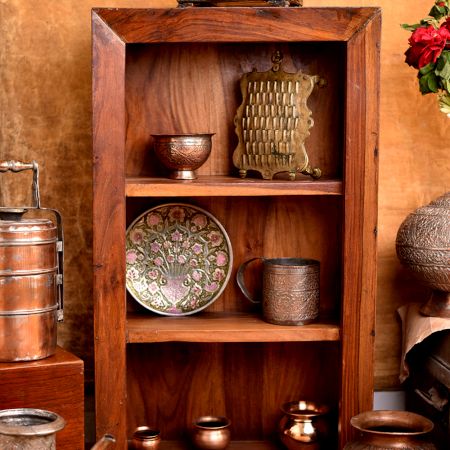
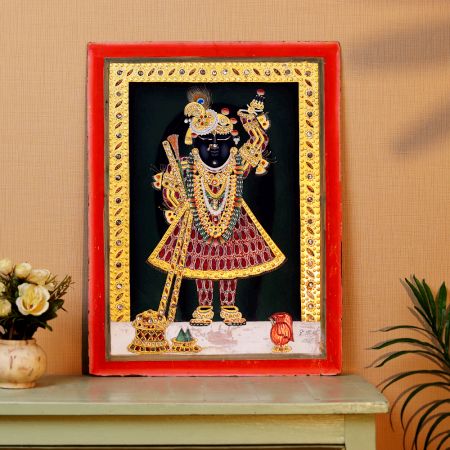
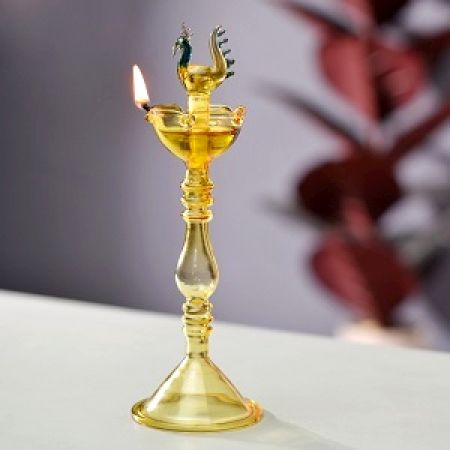



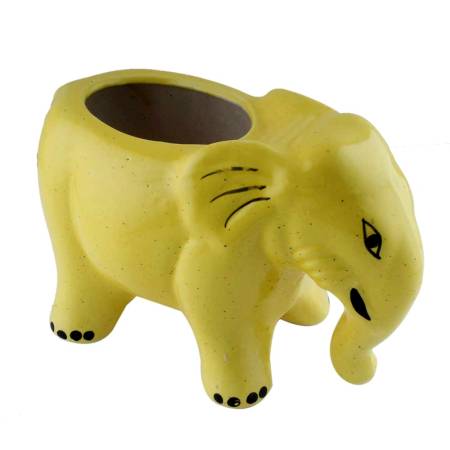
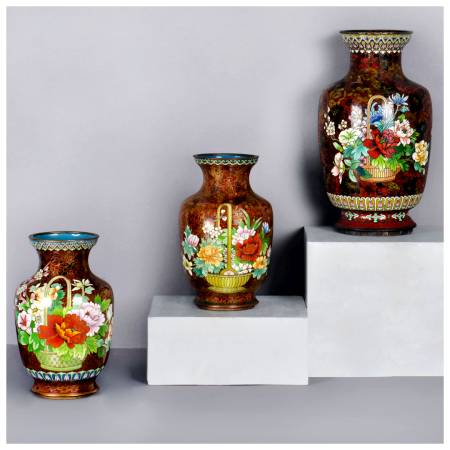
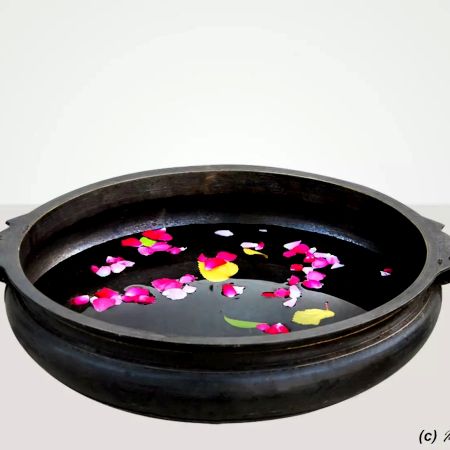

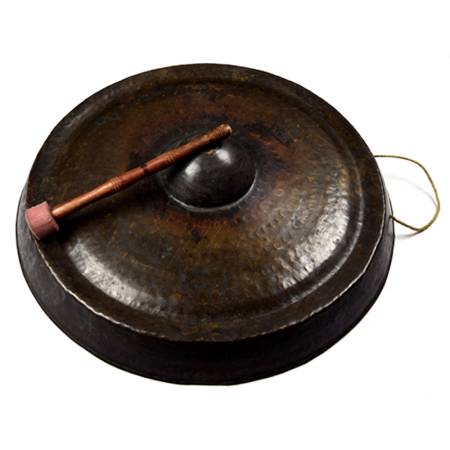



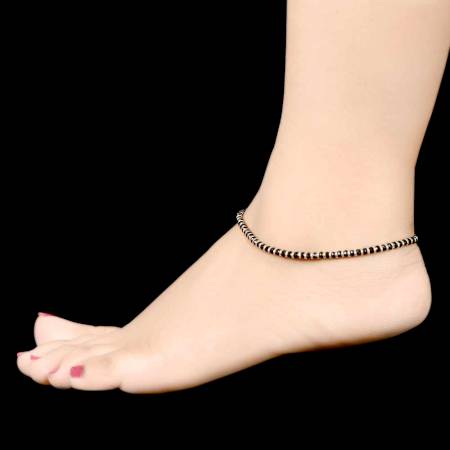
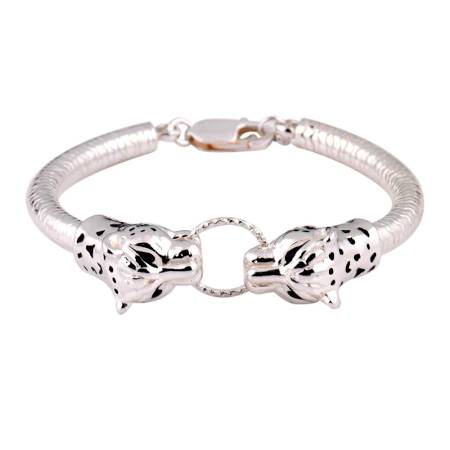
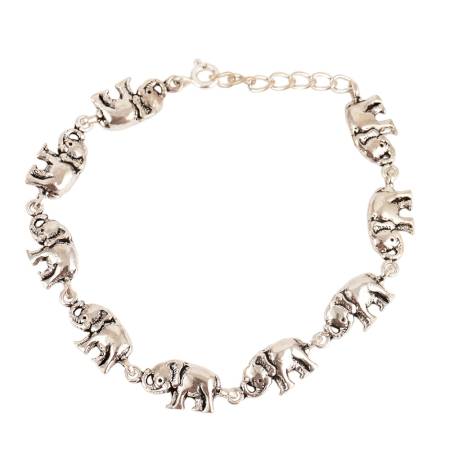
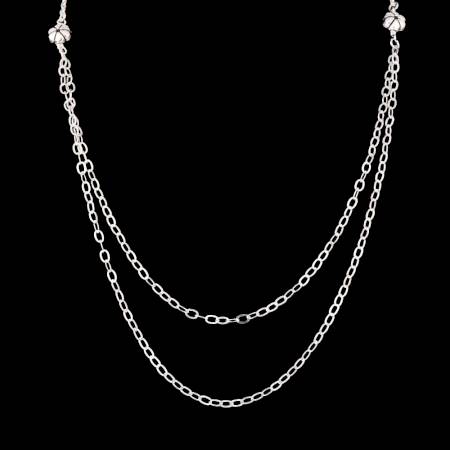
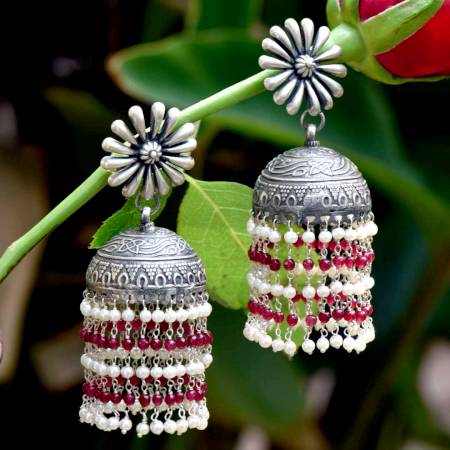
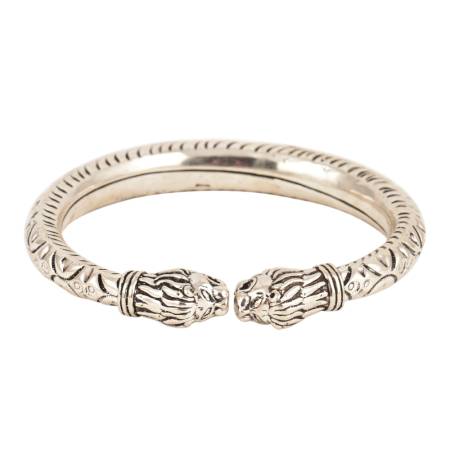
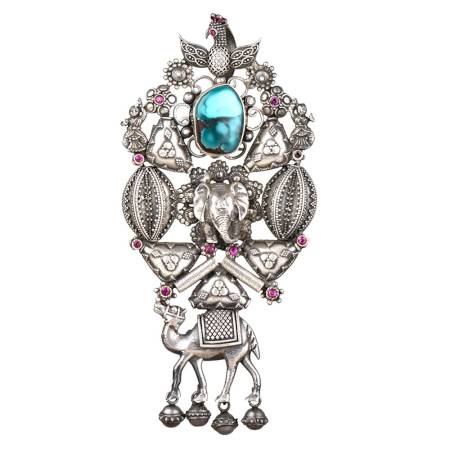
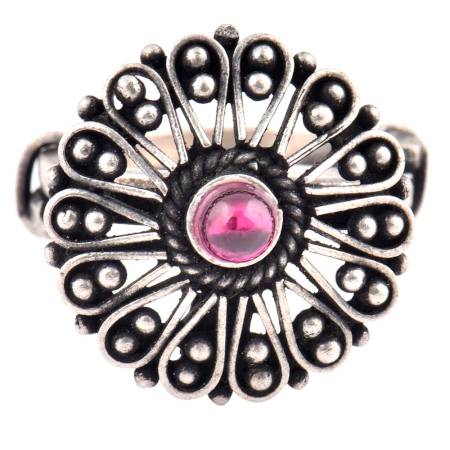
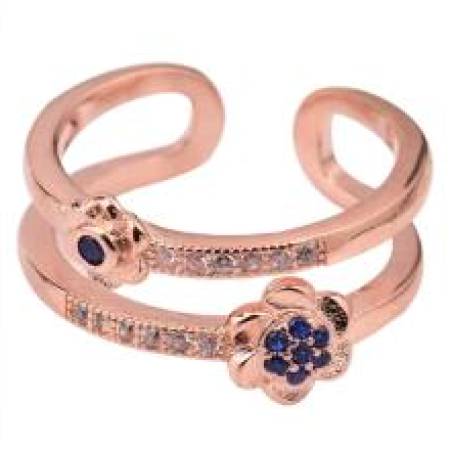



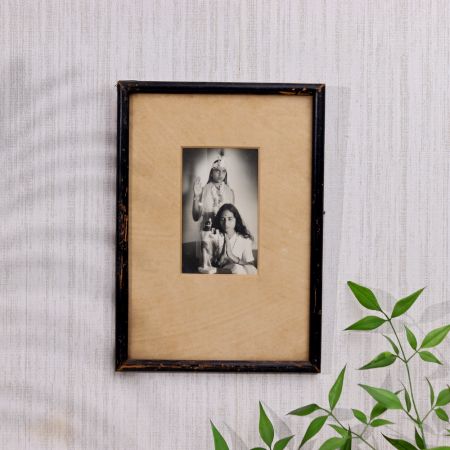




















































































.JPG?ver=1.7)
.JPG?ver=1.7)
.JPG?ver=1.7)
.JPG?ver=1.7)
.JPG?ver=1.7)
.JPG?ver=1.7)
.JPG?ver=1.7)
.JPG?ver=1.7)
.JPG?ver=1.7)
.JPG?ver=1.7)
.JPG?ver=1.7)
.JPG?ver=1.7)
.JPG?ver=1.7)
.JPG?ver=1.7)
.JPG?ver=1.7)
.JPG?ver=1.7)
.JPG?ver=1.7)
.JPG?ver=1.7)

